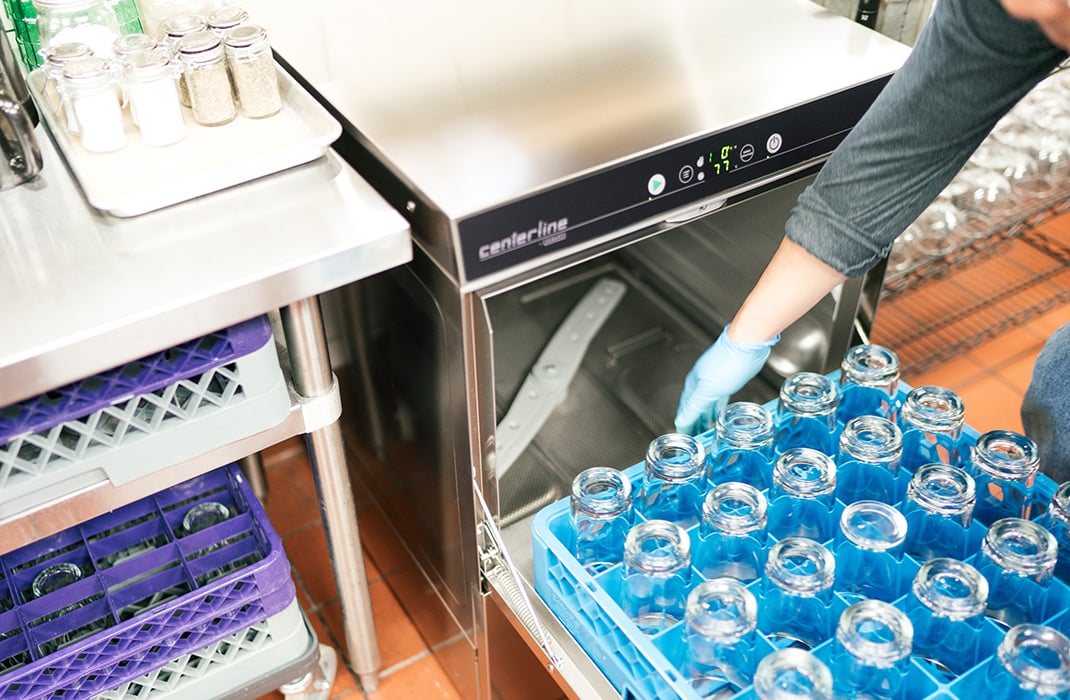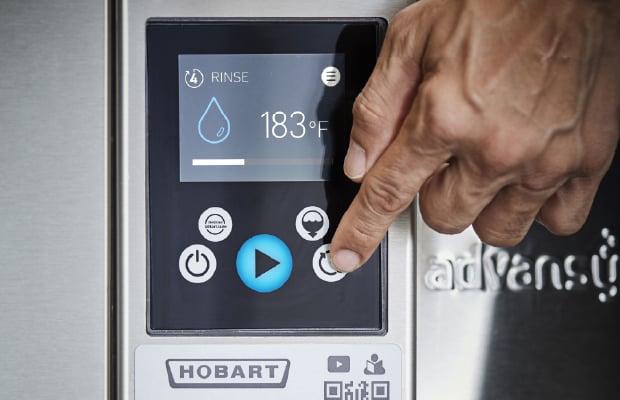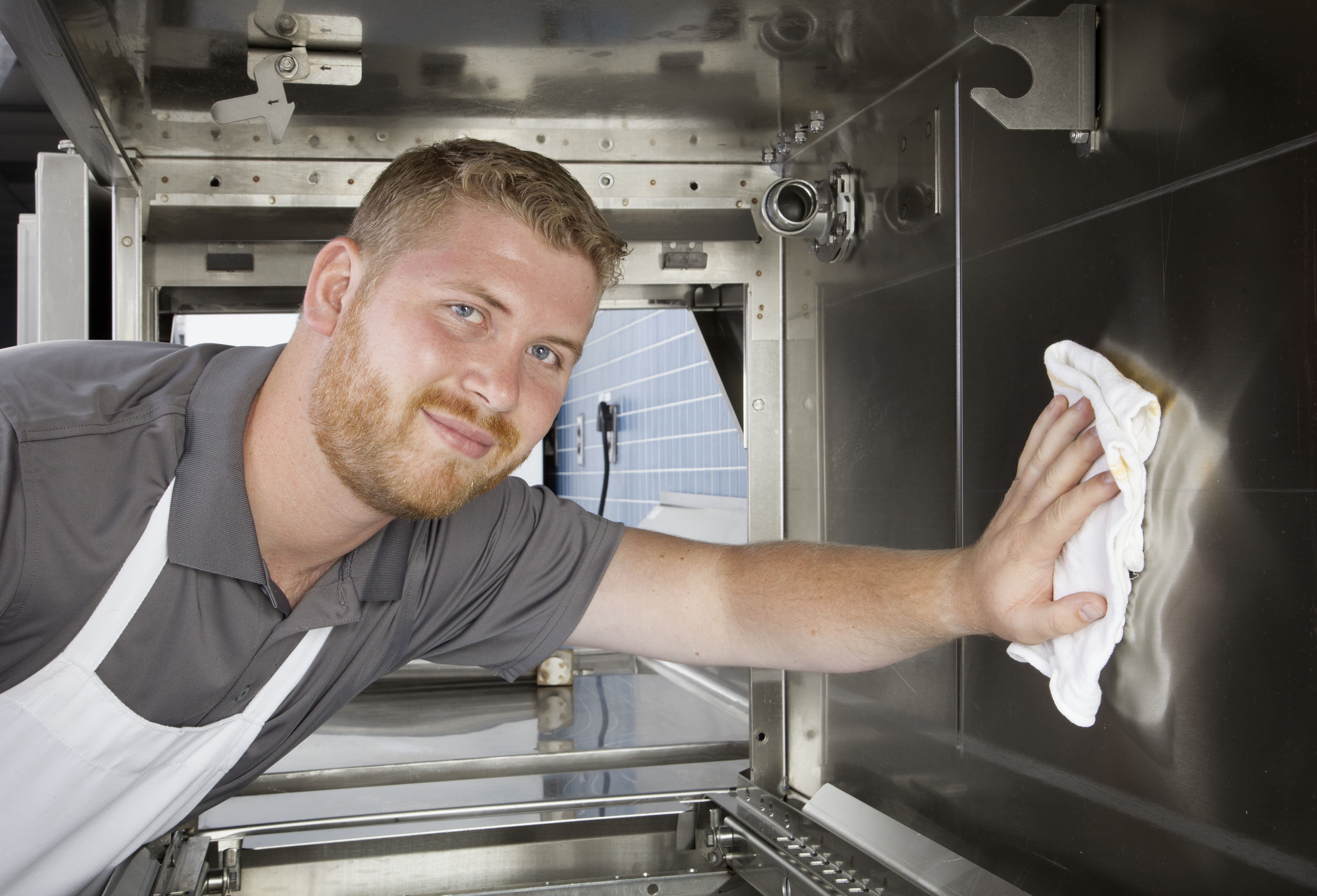For smaller restaurants and foodservice establishments, it can be a big step to decide to install a commercial dishwasher to take the place of the three-compartment sink. But choosing to install a dishmachine is just the first step. Next you have to look at the different options available and choose the type that works best for your operation and your budget.
One of the choices you need to make is deciding between a fill and dump or a recirculating commercial dishwasher. Both are available in undercounter and door-type options, and it is important to understand the differences between the two before making your decision.
Down and Dirty Basics
The main difference between a fill and dump machine and a recirculating dishmachine is in how water is used. A fill and dump machine has a tank that holds between one to one and one half gallons of water. At the end of each wash cycle, the dishmachine drains all the wash water out and refills with fresh rinse water. Each cycle is dosed with the appropriate amount of detergent, rinse aid, and sanitizer. After the cycle is complete, the rinse water is used for the wash water in the next cycle. These machines run at lower temperatures and use chemical sanitizers to sanitize ware, and usually rely on your facility water heater to maintain the required 120°F wash and rinse temperature.
In contrast, a recirculating dishmachine has a wash tank that is filled up with water that is used for multiple cycles. Wash water temperature is maintained with a heater in the tank and is continually replenished with a low volume rinse. Recirculating dishmachines are available in chemical sanitizing options, but most are sold as high-temperature sanitizing units.
Choosing the Right Dishmachine
Of course, one of the biggest differences between the two types of machines is the amount of water used. A recirculating dishmachine uses about 50% less water than the typical fill and dump machine, which leads to cost savings in water and energy. “Not only are you saving money by using half the amount of water, the water and energy savings are better for the environment,” says Pete Terwilliger, sales development manager, Hobart Warewash. “Most recirculating dishwashers are Energy Star certified, which means operators may also be able to receive a rebate on their purchase, depending on their state’s rebate offering.”
Another difference between the two types of machines is the amount of power needed to run the machine. Because fill and dump machines are not using high-temperatures to sanitize dishes, they don’t need as much power and can typically run on a 120 volt circuit. This also means it’s usually not necessary to install a vent over a fill and dump machine, depending on the municipality. Some operations choose to go with a fill and dump machine to save on installation costs, especially if they don’t have the power supply needed.
Benefits to Recirculating Dishwashers
While choosing a fill and dump dishwasher might save a little money with the initial purchase and installation, there are many long-term benefits to the recirculating dishmachine.
- Using up to 50% less water leads to real cost savings in water, energy and chemicals annually and over the life of the dishmachine.
- The Energy Star certification allows operators to take advantage of state energy rebates, where available.
- High temperature washing provides better cleaning performance (read more in our high vs low temp dishmachine blog).
- Wash times are 30-50 seconds faster per cycle, so you can wash more ware in less time.
While budget restraints can keep many independent operators from enjoying the benefits of a high-temp recirculating dishwasher, Hobart’s new Centerline undercounter commercial dishwasher provides a recirculating dishwasher at an affordable price. The Centerline is designed for simplicity and durability with basic features and operation, for businesses with basic dishwashing needs. “Hobart is proud to offer an undercounter dishmachine to fit your needs, no matter what your budget,” Pete says.





.png)


%20proc%20%20(1).jpg)


